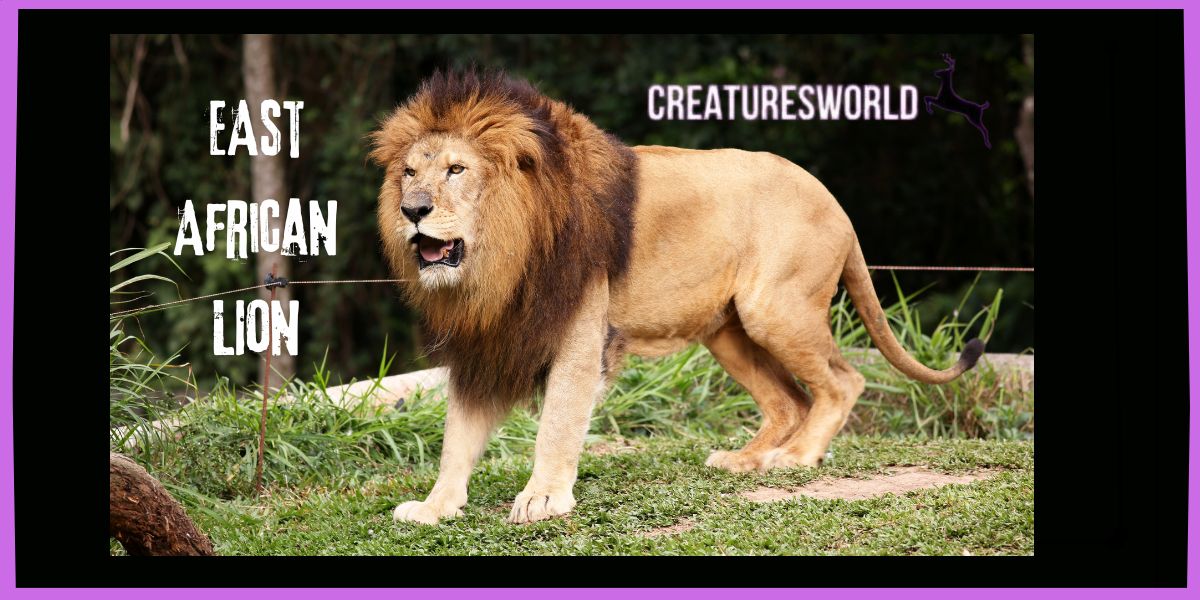The East African Lion, or Panthera leo melanochaita, as it is scientifically known. They were frequently called the “Masai Lion” in earlier writings. Whatever their name, they have always been fierce, cunning, and suited for the wild, making them nature’s living royalty.
The East African Lion Habitat
Why are all African lions so unique? They can adapt to a variety of environments within their territory. Lions will defend their territory whether it’s in arid grasslands, open savannahs, rocky hills, or even colder locations like the Ngorongoro Crater. They are not selective. These lions have established themselves throughout East Africa, from the vast plains of the Serengeti to the wildlife-rich Maasai Mara and even the verdant forests close to Queen Elizabeth National Park. These are lion kingdoms, not just locations.
The East African Lion Subspecies Identity
Modern science contradicts the long-held belief that all The East African lions are the same. Along with the lions of southern Africa, these lions belong to a subspecies known as Panthera leo melanochaita. This trait distinguishes them from their West and Central African cousins (Panthera leo leo). To put it another way, their land, prey, and climate all influenced their evolutionary trajectory. They’re not just lions—they’re East African originals.
The East African Lion Physical Characteristics
The East African lions are large, fearless, and shaped like the tanks of nature. Males can reach a maximum length of 8 to 10 feet from nose to tail and a shoulder height of approximately 4 feet. Although females are somewhat lighter, they are just as strong and fierce on their own. They typically weigh between 150 and 225 kg. Their mane, which can be golden, brown, or even jet black, is one of their most recognizable characteristics. The thicker and darker the mane, the colder the area. Lions that resemble walking legends can be seen, particularly in locations like Ngorongoro.
Their golden-yellow fur blends in like camouflage with the arid ground. They have strong legs, massive paws with retractable claws, and a long tail with a black tuft that they use for communication within the pride as well as for balance. Their eyes? Sharp, steady, and designed for the hunt, day or night, they face forward like all great predators.

The East African Lion Diet and Hunting Habits
Let’s discuss their diet, which includes almost anything they desire. Buffalo, Antelope, Warthogs, Webras, Wildebeest, and, if necessary, young Giraffes or Elephants. They typically hunt in the early morning, at dusk, or at night when it’s cooler. The lionesses are the true hunters, though the males can assist with larger kills. They prepare it similarly to a military ambush, circling their target, hiding behind the grass, and then launching a forceful charge. And here’s something crazy: they don’t hesitate to steal. They will kill any animal they come across with fresh kill.
Their Pride & It’s Reproduction
Unlike tigers or leopards, lions are not loners. They reside in close-knit groups known as prides. One to three dominant males, four to twelve related lionesses, and a group of active, playful cubs make up a typical pride. While the females do the majority of the hunting and rear the cubs, the males protect the pride and territory. Eventually, young men are expelled to forge their own way; they either live by themselves or join forces with other exiles to form alliances and seize control of another pride. It’s all about survival and strategy. Lions are the best at understanding that pride equates to strength.
When it comes to mating, The East African lions don’t adhere to a set schedule; they can do so whenever the weather permits. And things get intense when a lioness is in heat. A single pair may mate repeatedly for days at a time, every 15 to 30 minutes. The mating ritual is not limited to just once or twice. Occasionally, in a single cycle, over a hundred times. It’s how nature ensures that life goes on.
The lioness leaves the pride to find a safe, secret den hidden away in thick bushes, tall grass, or rocky shelters after she becomes pregnant. After roughly 110 days of pregnancy, her cubs are born small, blind, and utterly defenseless. She typically gives birth to two to four cubs, but occasionally she may give birth to more.
Lion cubs spend the first few weeks of their lives totally hidden from the outside world, sheltered by their mother in secret dens. She only leaves when she has to go hunting, and even then, she returns quickly because she knows there is danger everywhere. She finally introduces the cubs to the pride when they are between 6 and 8 weeks old and strong enough to walk and wobble. The wild then becomes their classroom.

They pick up knowledge by observing how their siblings fight, how their moms hunt, and how survival operates. By three months, they begin to taste meat, and every day they gain confidence, strength, and instincts. The wilderness is harsh in this area, though. Many won’t survive past the first year.
You will always remember the sound of a lion’s roar. To mark territory, locate pride members, or frighten adversaries, a male lion’s roar can travel up to 8 kilometers. However, lions communicate with one another through body language, grunting, growling, and purring in addition to roaring. Despite their fearsome reputation, lions are intelligent and social animals. To conserve energy, they can rest for up to 20 hours each day, even with their wild energy levels. When the sun sets, they awaken and take control of the night with their keen senses.
Their Conversation
The sad news is that the IUCN has classified East African lions as vulnerable. The primary causes for their declining numbers include habitat loss, illegal hunting, human conflict, and diseases such as canine distemper. As human populations increase, lions and farmers often clash over livestock, resulting in poisoning and retaliatory killings.
Their current population is estimated to be between 10,000 and 12,000 and continues to decline. However, local tribes, wildlife rangers, and conservation organizations are taking action to defend them by creating safe areas, raising awareness, and combating poaching.
Everything I ( I, Kabir Thakur) have written here is thought out and well research processed Information, As soon new news come out about them I will update as soon as I can. Please comment me for your doubts and to correct me if I am wrong.

